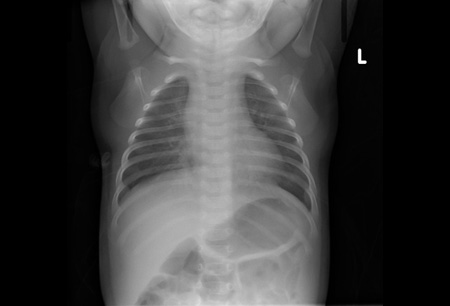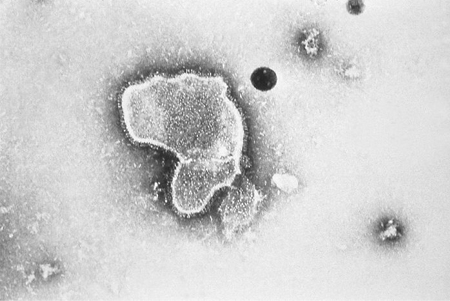小结
定义
病史和体格检查
关键诊断因素
- exposure to RSV
- infants at high risk for RSV infection
- winter season
- older adult age
- immune deficiency
- rhinorrhea/congestion
- tachypnea
- increased work of breathing
- cough
- wheeze
- poor feeding
- cyanosis
- rales
- apnea
其他诊断因素
- fever
危险因素
- exposure to RSV
- hemodynamically significant congenital heart disease
- history of prematurity
- immune deficiency
- chronic lung disease
- indigenous/American-Indians/Alaska native infants and young children
- infants aged <6 months
- winter season
- older adult age
- smoke exposure
- family history of asthma
- Down syndrome
诊断性检查
首要检查
- pulse oximetry
Tests to avoid
- broad respiratory pathogen panels
需考虑的检查
- chest x-ray
- hydration status
- rapid antigen detection from respiratory specimen (e.g., nasopharyngeal aspirate)
- reverse transcriptase polymerase chain reaction of respiratory specimen (e.g., nasopharyngeal aspirate)
治疗流程
mild or self-limited illness
moderate illness
severe illness
撰稿人
作者
Giovanni Piedimonte, MD, FAAP, FCCP
Vice President for Research
Professor of Pediatrics, Biochemistry & Molecular Biology
Tulane University School of Medicine
New Orleans
LA
利益声明
GP declares that he has no competing interests.
Margot Anderson, MD
Assistant Professor of Clinical Pediatrics
Section of Infectious Diseases and Hospital Medicine
Tulane University School of Medicine
Tulane University
New Orleans
LA
Declarações
MA declares that she has no competing interests.
Agradecimentos
Dr Giovanni Piedimonte and Dr Margot Anderson would like to gratefully acknowledge Dr Frank Esper and Dr Melvin L. Wright, previous contributors to this topic.
Declarações
FE is on an advisory board for Procter and Gamble. MLW declares that he has no competing interests.
Revisores
Leonard R. Krilov, MD
Chief
Pediatric Infectious Disease
Vice Chairman
Department of Pediatrics
Children's Medical Center
Winthrop University Medical Center
Mineola
Professor of Pediatrics
School of Medicine
Stony Brook University Medical Center
Stony Brook
NY
Declarações
LRK has participated as an investigator in multiple clinical research trials supported by grants from MedImmune. LRK has also served as a consultant to MedImmune on medical advisory boards and is a member of their speakers' bureau.
Robert Welliver, MD
Professor of Pediatrics
Women and Children's Hospital
Buffalo
NY
Declarações
RW declares that he has no competing interests.
Jennifer Handforth, MB ChB, MRCPCH, DTM&H
Consultant Paediatrician
Croydon University Hospital
Croydon
UK
Declarações
JH declares that she has no competing interests.
Créditos aos pareceristas
Os tópicos do BMJ Best Practice são constantemente atualizados, seguindo os desenvolvimentos das evidências e das diretrizes. Os pareceristas aqui listados revisaram o conteúdo pelo menos uma vez durante a história do tópico.
Declarações
As afiliações e declarações dos pareceristas referem--se ao momento da revisão.
Referências
Principais artigos
Bont L, Checchia PA, Fauroux B, et al. Defining the epidemiology and burden of severe respiratory syncytial virus infection among infants and children in western countries. Infect Dis Ther. 2016 Sep;5(3):271-98.Texto completo Resumo
Ralston SL, Lieberthal AS, Meissner HC, et al; American Academy of Pediatrics. Clinical practice guideline: the diagnosis, management, and prevention of bronchiolitis. Pediatrics. 2014 Nov;134(5):e1474-502.Texto completo Resumo
Committee on Infectious Diseases; American Academy of Pediatrics. Red book. 32nd ed. Elk Grove Village, IL: AAP; 2021.Texto completo
Artigos de referência
Uma lista completa das fontes referenciadas neste tópico está disponível para os usuários com acesso total ao BMJ Best Practice.

Diagnósticos diferenciais
- Human metapneumovirus
- Influenza virus
- Parainfluenza virus
Mais Diagnósticos diferenciaisDiretrizes
- Australasian bronchiolitis guideline
- Bronchiolitis in children: diagnosis and management
Mais DiretrizesFolhetos informativos para os pacientes
Bronchiolitis
Asthma in children
Mais Folhetos informativos para os pacientesConectar-se ou assinar para acessar todo o BMJ Best Practice
O uso deste conteúdo está sujeito ao nosso aviso legal
